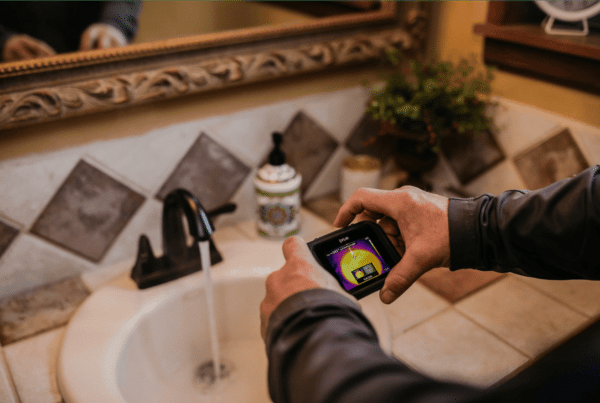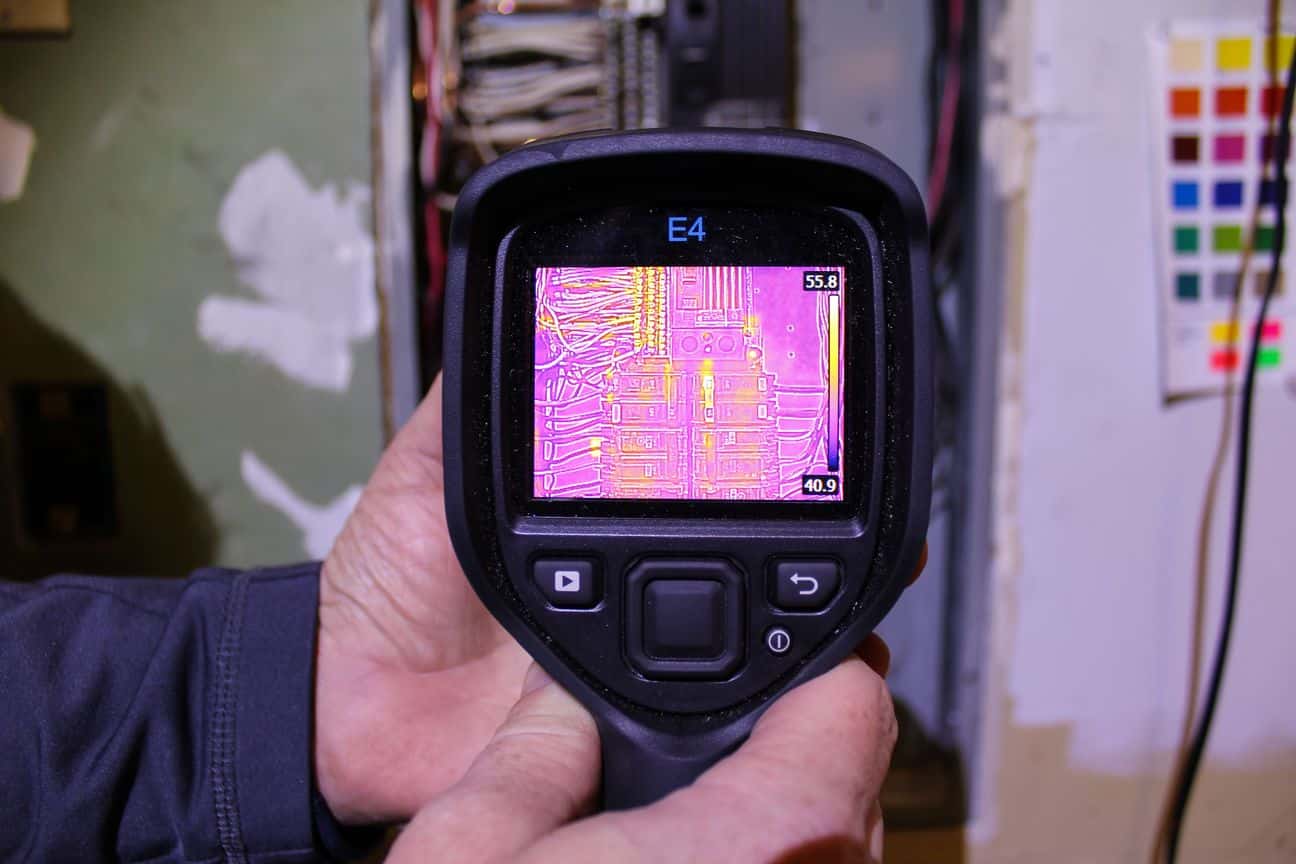
Limited Infrared Thermography
What is it?
Infrared thermography is a tool that captures wavelengths just a little longer than those on the visual spectrum, which are invisible to the human eye. During an infrared thermography inspection the inspector uses thermal imaging cameras. This infrared scan is a non-invasive, non-destruction inspection that helps detect and measure temperature differences in the home. The technology can be used in the form of a camera to create visual representations of surface heat. No, these cameras are not able to look through the walls of a home. They simply display the different temperatures that the home has stored in the walls, floors, ceilings, or any other inspected target. Surfaces give off different levels of radiation and infrared thermography displays those distinctions. Then, a trained technician uses that picture to assess conditions in the structure, from insulation variations, heating and cooling efficiency, water leaks, electrical issues and more
Making Invisible Problems Visible
Variations in temperature are not always perceptible. By the time electrical issues become visible to the human eye, the damage may already be extensive. Infrared thermography can be used to uncover overheating in electrical panels and to look at wires and breakers for a more thorough picture of components that may be faulty.
Infrared thermography also has a place in commercial structure inspections. It is especially handy for use in flat roofs, where it can detect minor leaks and roof membrane issues before they become extensive, and expensive, problems.
Infrared thermography can be used to inspect insulation, either in new buildings to ensure work was done properly, or in older buildings where there can be concerns about insulation settling. Temperature variations between wall sections or differences from the ceiling down to the floor are all clues a trained eye can use to assess a problem.
Infrared technology can find temperature differentials
Here’s what thermography can find:
Electrical
Electrical equipment should be at a safe temperature.
Plumbing
Scanning underneath sinks and around plumbing systems for leaks.
Air Conditioning
Your HVAC could be leaking or not cooling property.
Heating
This ensures your heater is reaching the proper temperature.
Roof Leaks
Scanning ceilings and inside the attics can find areas of water intrusion.
Ductwork
Ductwork can leak causing high energy bills.


This service can ONLY be scheduled as an added-on service with an inspection and is included with specific packages.
Where We Service
We complete home inspections in these counties: Pierce, Thurston, Mason, Lewis, Grays Harbor, and South King.
